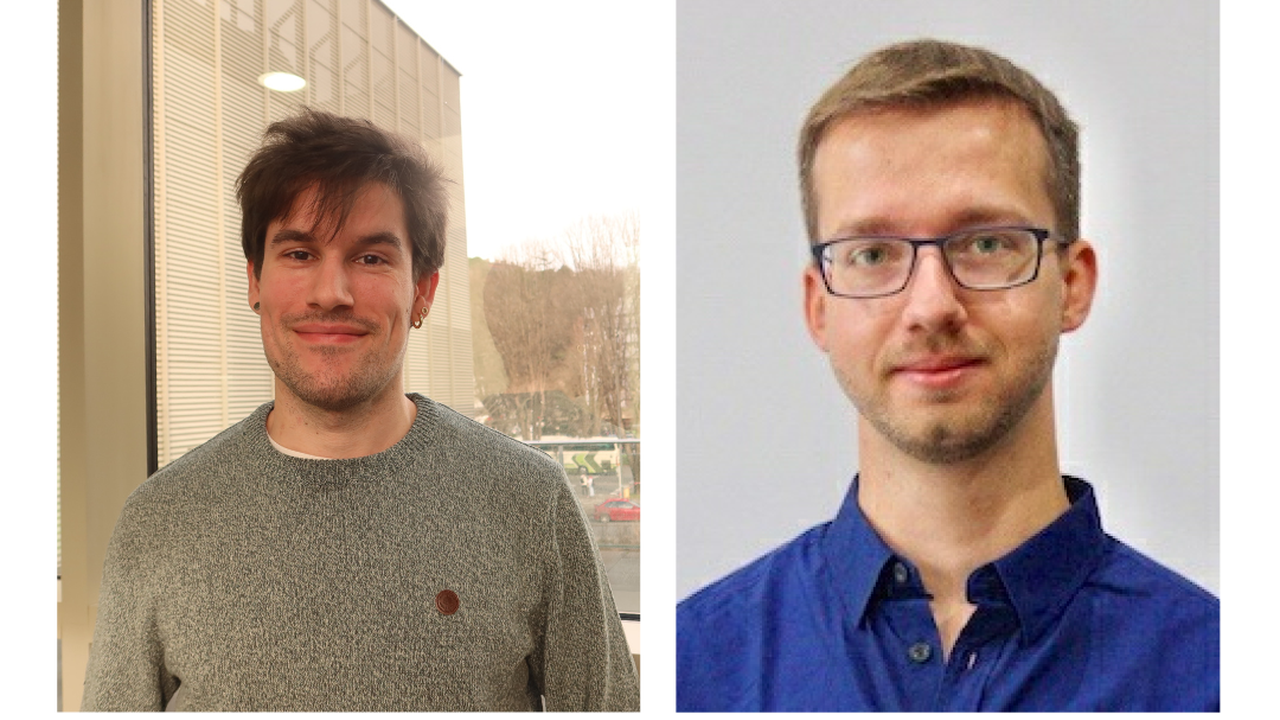PhD Mid-term Seminar Series
CIC nanoGUNE Seminars
- Speaker
-
Jan Krpensky, Mikel Anzola
- When
-
2025/04/07
10:30 - Place
- CIC nanoGUNE Seminar room, Tolosa Hiribidea 76, Donostia-San Sebastian
- Add to calendar
-
iCal

Jan Krpensky: THz nanoplasmonics based on Ag2Te
Polaritons in thin layers can propagate with wavelengths up to 100 times shorter than that of photons, allowing for nanoscale manipulation of light. In anisotropic materials, polaritons lead to even more remarkable photonic phenomena, such as direction-dependent wavelengths, diffraction-free propagation, negative refraction, and enhanced local density of photonic states. Ultra-confined anisotropic polaritons have been observed in the mid-IR spectral range and are typically phonon polaritons. In-plane anisotropic plasmon polaritons, which exist in much broader spectral ranges compared to phonon polaritons, have been barely observed.
In this talk, I will introduce scattering-type scanning near-field optical microscopy (s-SNOM) that we use to image ultra-confined in-plane anisotropic THz surface plasmon polaritons (SPPs) propagating along the surface and edges of thin layers of Ag2Te. Ag2Te is a monoclinic semiconductor where the electrons exhibit anisotropic effective masses. Moreover, due to the existence of edge modes, a cut-off-free propagation of SPPs in narrow waveguide structures is possible. They can be exploited for the development of nanoscale Fabry-Perot SPP resonators, which in the future may be employed for field-enhanced THz sensing or (ultra)strong coupling between THz fields and molecules or quantum materials.
References:
1. Shu et al. Nat. Mater. 22, 860 (2023)
Mikel Anzola: Plasmonic activation of Nanomagnetic Logic Gates and Artificial Spin Ices
Artificial Spin Ices (ASI) are engineered 2D arrays of nanomagnets designed to induce frustration in their dipolar interactions, enabling the study of emergent collective magnetic phenomena. By tailoring ASI geometries, we can create novel metamaterials with potential technological applications. These structures require an activation energy that can be efficiently supplied through thermoplasmonic means, enabling fast and energy-efficient manipulation. In this talk I will examine the heating dynamics across different array designs and substrate materials, providing insight into their impact on device performance.
